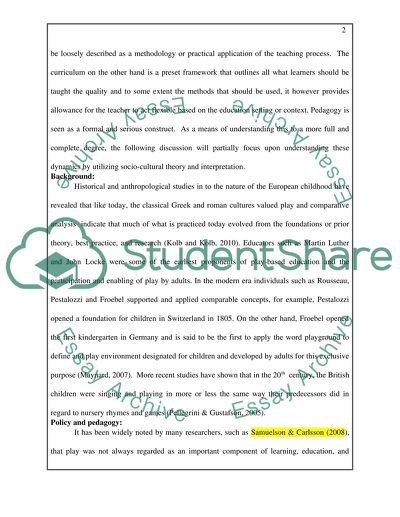Cite this document
(“Critically discuss the importance of play pedagogy in the curriculum Essay”, n.d.)
Retrieved from https://studentshare.org/education/1629464-critically-discuss-the-importance-of-play-pedagogy-in-the-curriculum-for-young-childrens-learning-and-development
Retrieved from https://studentshare.org/education/1629464-critically-discuss-the-importance-of-play-pedagogy-in-the-curriculum-for-young-childrens-learning-and-development
(Critically Discuss the Importance of Play Pedagogy in the Curriculum Essay)
https://studentshare.org/education/1629464-critically-discuss-the-importance-of-play-pedagogy-in-the-curriculum-for-young-childrens-learning-and-development.
https://studentshare.org/education/1629464-critically-discuss-the-importance-of-play-pedagogy-in-the-curriculum-for-young-childrens-learning-and-development.
“Critically Discuss the Importance of Play Pedagogy in the Curriculum Essay”, n.d. https://studentshare.org/education/1629464-critically-discuss-the-importance-of-play-pedagogy-in-the-curriculum-for-young-childrens-learning-and-development.


